E-Archive
Cover Page
in Vol. 22 - September Issue - Year 2021
The Crucial Importance Of Shot Peening In The Aviation Industry
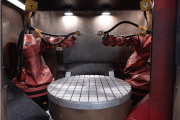
Figure 1: Working area of ARSP 1000 ECO DUAL
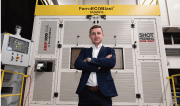
Figure 2: Mr. Aljaž Molek, FerroECOBlast’s certified shot-peening expert
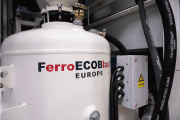
Figure 3: Double-chamber pressure peening generator
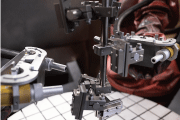
Figure 4: Universal Almen strip holder for intensity check
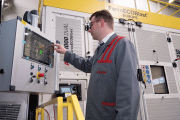
Figure 5: User-friendly FerroSmartPanel
Today's transportation is very fast and efficient thanks to airplanes. Before the COVID-19 epidemic, airplanes transported 4.5 billion passengers and 57.7 million tonnes of freight every year. To keep them moving safely and rapidly, airplanes are equipped with turbojet engines that need to withstand extremely high loads.
Did you know that the most powerful turbojet engine can generate up to 115,000 pounds of thrust, which is up to 510kN, an equivalent of 110,000 horsepower? To keep such engines running, some serious engineering needs to be done first.
One of the processes aimed at keeping the engine running safely at such loads is the shot-peening process, which improves mechanical properties by inducing residual compressive stress and prevents fractures on practically every component of a turbojet engine.
Originating in the heart of Europe, FerroECOBlast® Europe develops solutions and manufactures machines for surface treatment processes, shot peening included. With expertise in this area since 1964, FerroECOBlast® Europe has made a name for itself among aircraft manufacturers and repair shops all around the world. The company’s FAA-accepted Shot Peening experts provide consultation, testing and solutions for any workshop – whether specializing in engines, landing gear, structural components, or composites – and increasingly for the additive manufacturing industry, which has become very popular in aviation in recent years. The company's presence in Europe, the Middle East, Asia-Pacific, the United States, New Zealand and Australia goes to show that distance is no obstacle for their clients when it comes to choosing a reliable solution and quality support. Also, during the COVID-19 epidemic, FerroECOBlast® Europe has successfully completed all its pending projects with the help of its local partners and through virtual support. As Charles Darwin put it: "It is not the strongest of the species that survives, nor the most intelligent. It is the one that is the most adaptable to change". And FerroECOBlast® Europe did exactly that – it adapted to changes to support its partners.
This particular solution was developed for the application of the shot-peening process on turbojet engines and gas turbine components, with a particularly strong focus on process repeatability and traceability.
Manufacturers of jet engines know full well how important it is to apply this process on components like discs, blisks, blades, shafts, essentially almost every single component of a turbojet engine; therefore, machines need to be designed with the utmost precision and attention to every little detail in order for them to provide repeatable and traceable results. FerroECOBlast® Europe carries out five important steps to make its solution match the customer’s needs and expectations as closely as possible. Robotic, automatic, or manual testing is carried out at the company’s on-site testing facilities, during which process parameters are identified by R&D and FAA-accepted Shot Peening personnel. The results obtained are then submitted to the customer for confirmation. Once this stage is finished, the second stage is engaged – technical design. The technical design is developed in cooperation with the customer in order to meet their expectations – either in terms of the machine's capabilities, layout, complexity, component selection, or any other. This is also submitted to the customer for confirmation. The technical evaluation and final confirmation are followed by production and assembly. The manufacturing and assembly of machinery is carried out entirely at the company's HQ, and the machinery is tested together with the customer before being shipped out. Next up is step number 4, installation and training. FerroECOBlast® Europe experts come to the installation site together with their local support team to install the machine, perform the start-up and repeat the testing at the customer’s location. Once this is completed, training is provided to operators, technicians and maintenance staff so as to ensure smooth operation of the machine and prevent any downtime. And finally, the last, fifth step, aftersales activities. FerroECOblast® Europe and their local support are dedicated to providing quality after-sales support, which is oftentimes even more important than the solution itself. Consultation, support, and fast response times are their principal values that help keep their customers satisfied.
In this particular case, the solution was designed to use two robots and a synchronized turntable, which allows 13 different axis manipulations in one single machine. Each robot is equipped with two peening nozzles, which can be adjusted to allow the use of only one nozzle for smaller parts – depending on the job or the part currently being processed by the machine.
The most important things in the shot-peening process are process repeatability and traceability, so the recycling of media needs to be done with precision. First, the peening media is extracted and transported from the bottom of the hopper to a dust extraction unit called "air-wash", where dust is removed from the shot-peening media. The peening media is then fed into a vibration sorting machine where it gets sifted by size, making sure that only correctly-sized media can be used back in the system. But before being used, the media needs to pass through a spiral sorting machine to eliminate all broken particles that are not round anymore – this way, shots always have the same size and shape inside the operating mix.
Once the media is properly recycled and ready to use, the work process needs to be precisely and carefully controlled. In a properly conducted shot-peening process, media flow, air pressure, nozzle angle, clearance between the nozzle and the part, turntable movement and ventilation need to be controlled with ultimate precision in order to ensure process repeatability. Electromagnetic valves are therefore used for every single nozzle so as to keep the tolerance levels below ±3% and the air pressure within the deviation range of ±1%. This requires the use of special valves and program in the backend that control every component. To check the quality of the process, intensity tests are conducted on Almen strips – this shows the operator whether the given parameters are in range and free from any deviations.
This is done by a PLC operated via the FerroSmartPanel interface. Good machines deserve good interfaces, which is why FerroECOBlast® Europedeveloped its own user-friendly interface to allow machine control and visual observation of machine parameters and the whole process. In the designing of such an interface, a lot of focus was placed on delivering the best user experience for operators. In an industry as demanding as aviation, all processes need to be traced back, so this user-friendly FerroSmartPanel allows the logging of full process and machine history, which can be exported onto a USB key or SD card for every individual part or batch. FerroECOBlast® Europe offers a system developed in-house that controls, tracks, and stores all the relevant data, making sure the design and production processes are always traceable. Furthermore, the touchscreen panel also allows the creation of peening saturation curves for the operator to print out and enclose with the shot-peening report. The machine interface includes connectivity with the internal process control protocol, allowing all the machines' parameters and statuses to be displayed in the engineers' offices for the purpose of tracking every step or printing out the entire process for each batch in order to monitor the trace of the process.
FerroECOBlast® Europe machines boast the following key features: Repeatability: to always carry out the selected shot-peening process with the same parameters and level of precision and to ensure identical results on every single part, eliminating any possibility of mistakes. Flexibility: to be able to quickly adjust parameters and the shot peening process to different parts in order to minimize machine downtime. Traceability: the second most important feature after repeatability, it allows the tracing back of the process for each individual part. And finally, Durability: to reduce the machine's downtime during maintenance and to extend its lifespan. As mentioned above, this process allows no margin for error. If errors begin to mount up in the aviation industry, the most important thing is to have access to the full history of the aircraft manufacturing process, because this is the only way to go back and check out why something happened and be able to improve or change something when necessary.
As is often heard in aviation circles, “Failures don’t just happen, they are triggered by a chain of critical events”, which is why traceability in such an industry is an inevitable must.
For Information:
FerroČrtalič d.o.o.
Sela pri Dolenjskih Toplicah 47
SI-8350 Dolenjske Toplice, Slovenia
Tel. +386.7.38 45 100
E-mail: sales@ferrocrtalic.com
www.ferroECOblast.com
www.ferroecoblast.blog



























